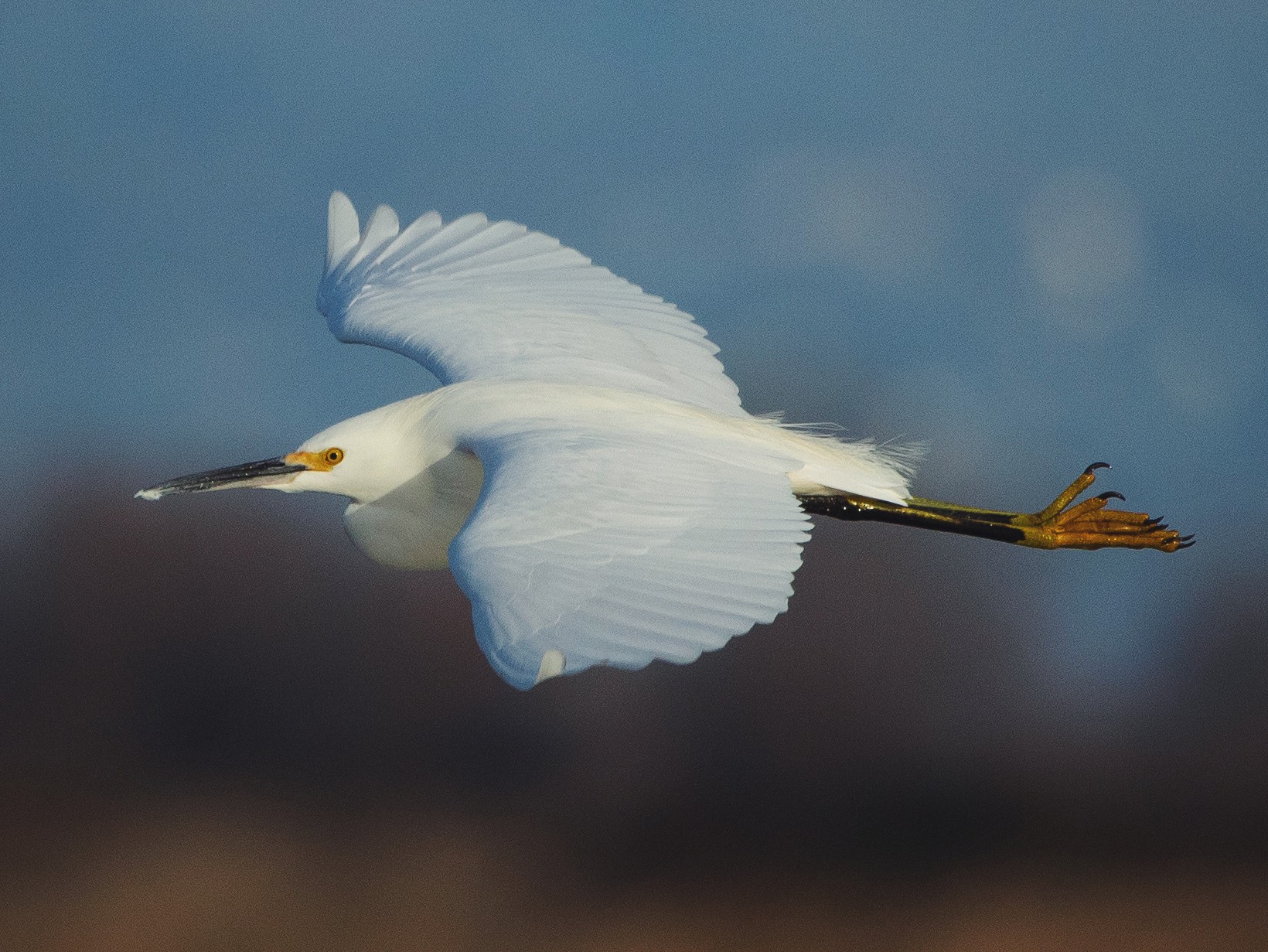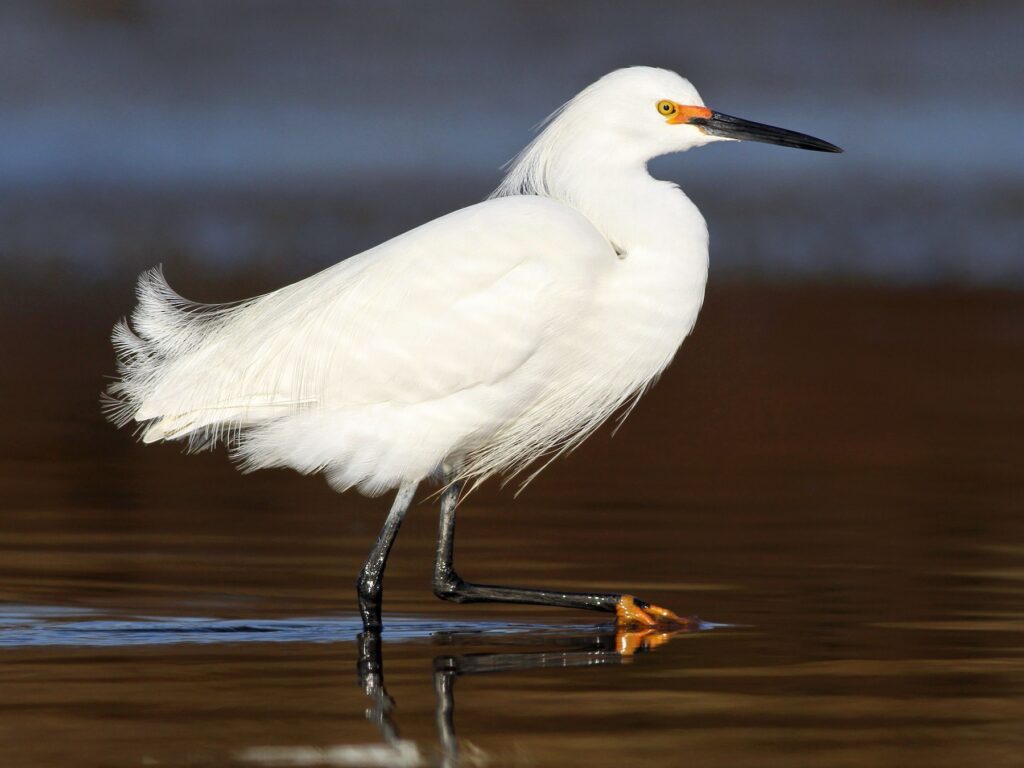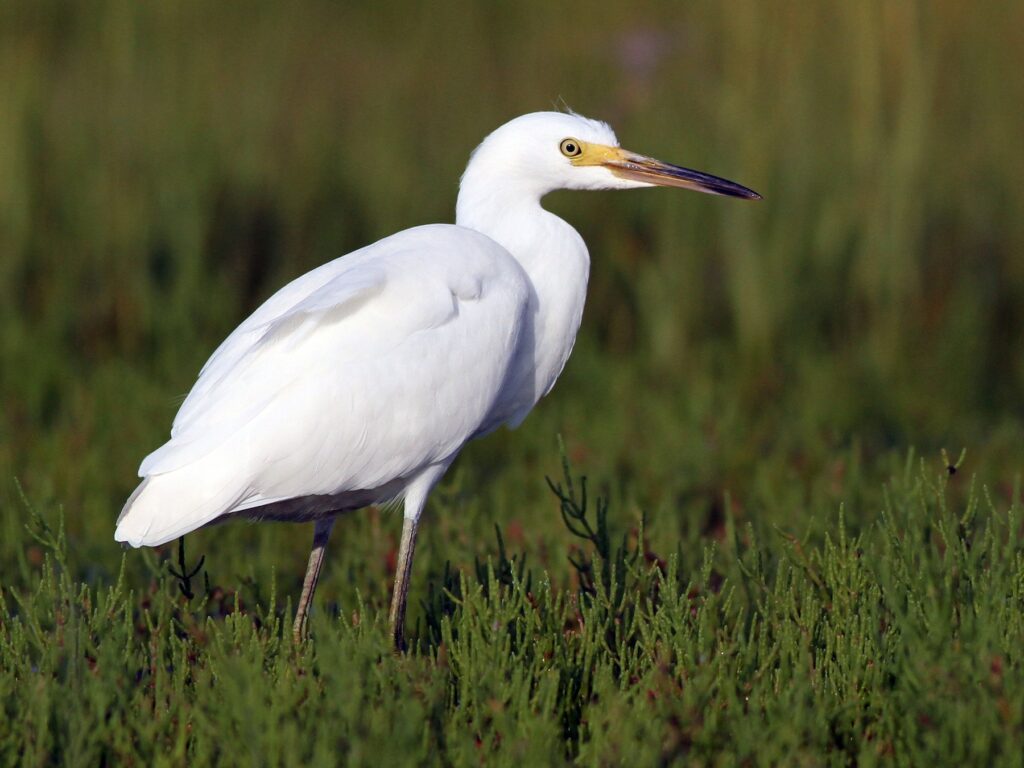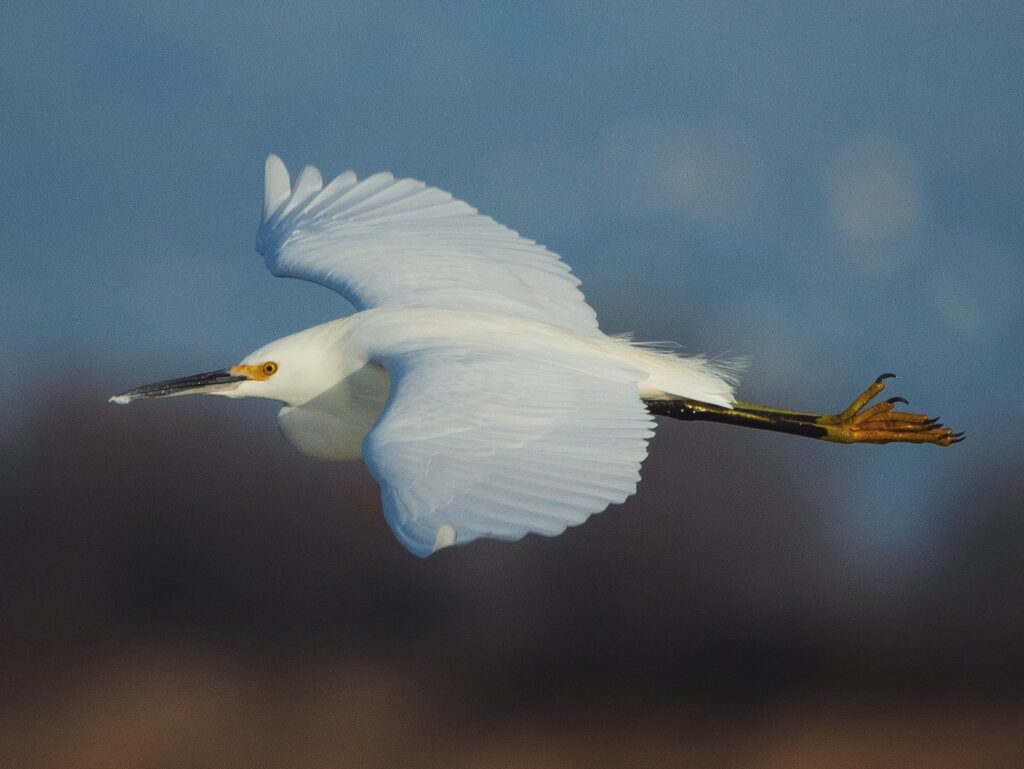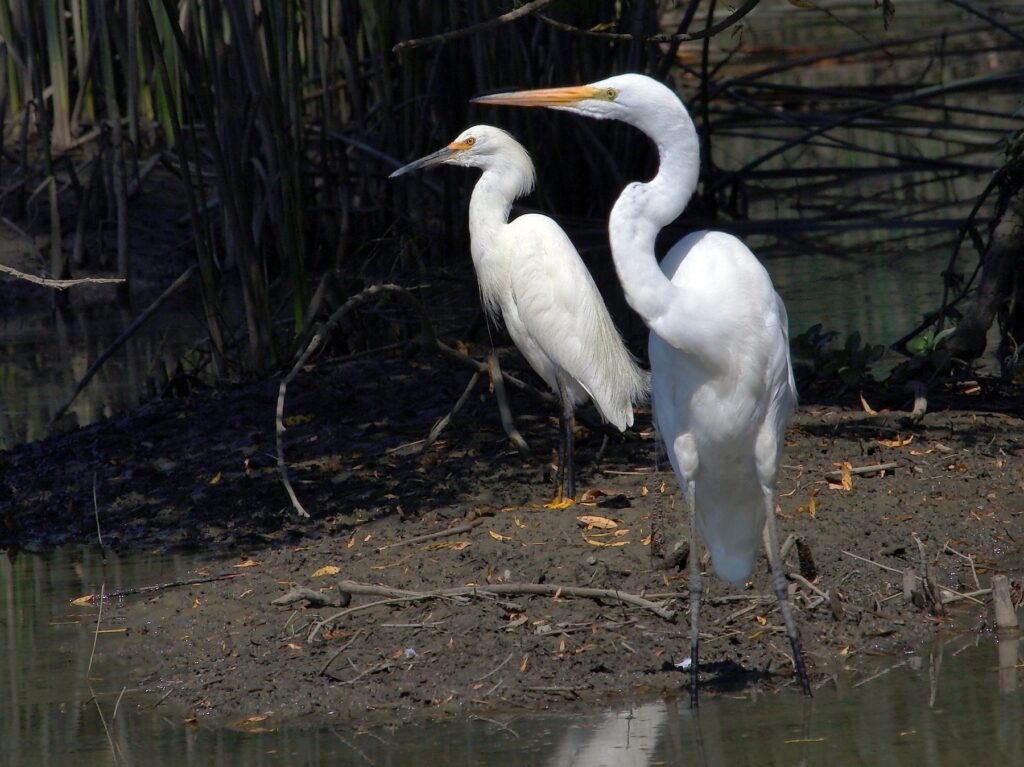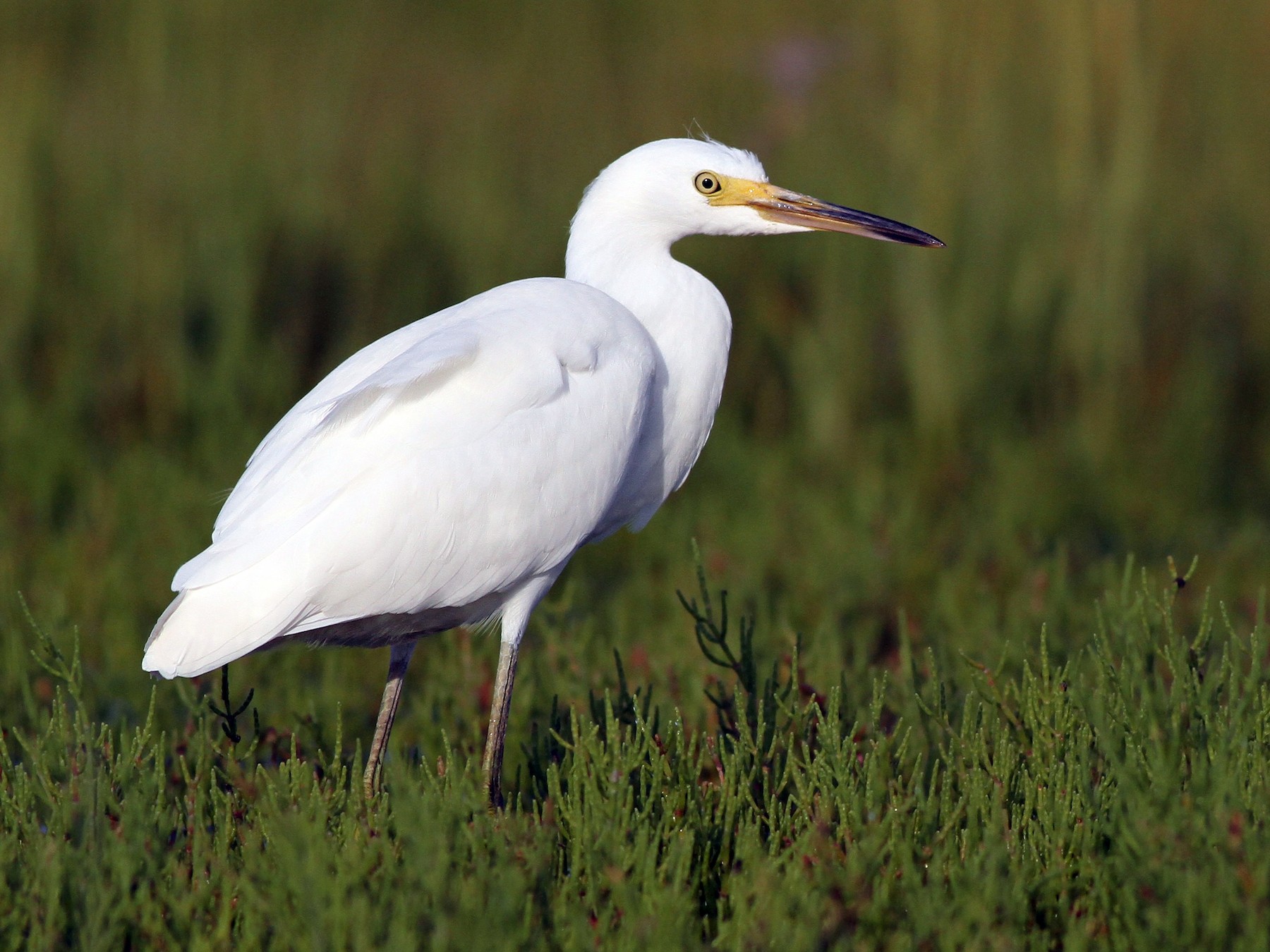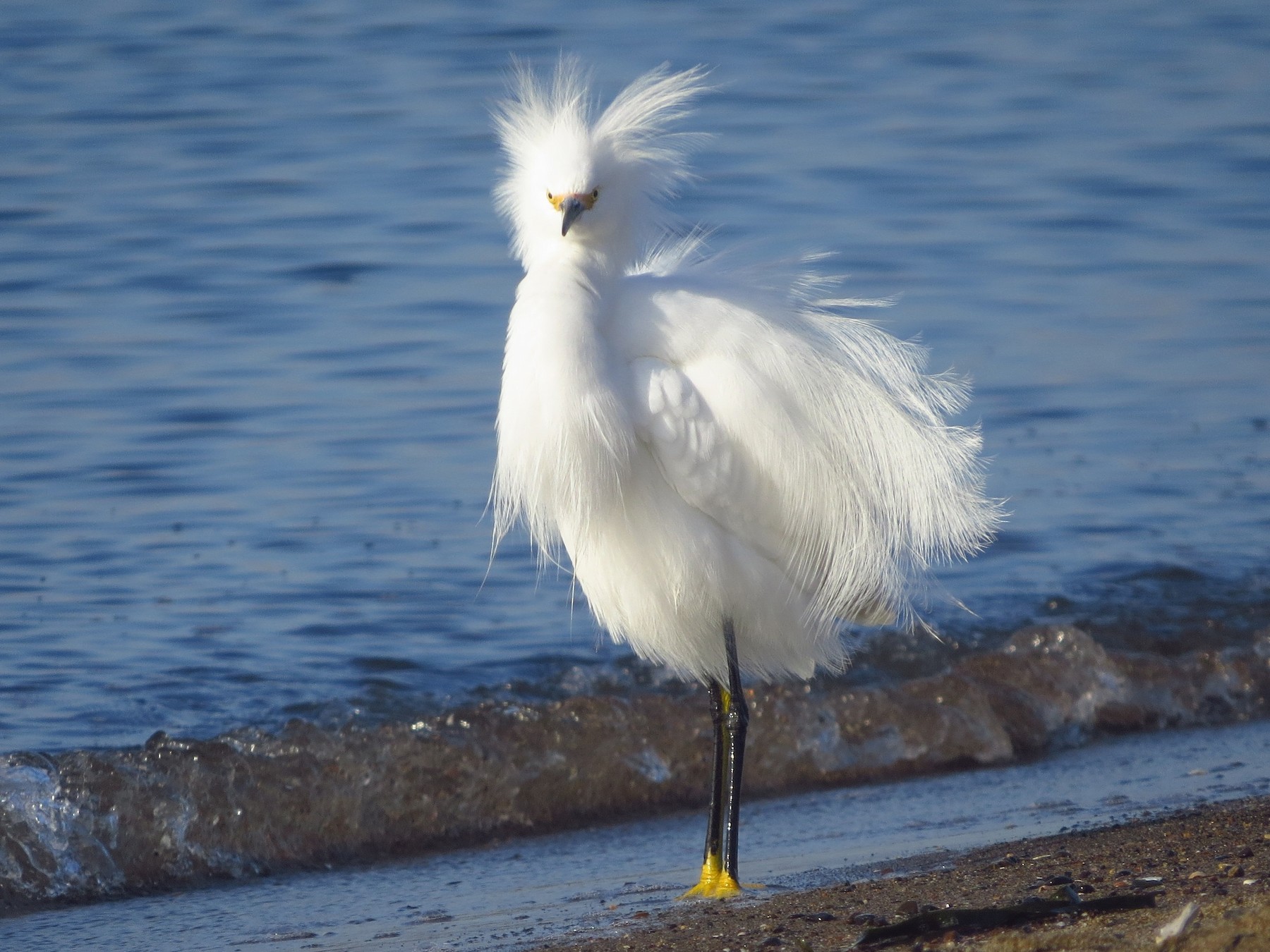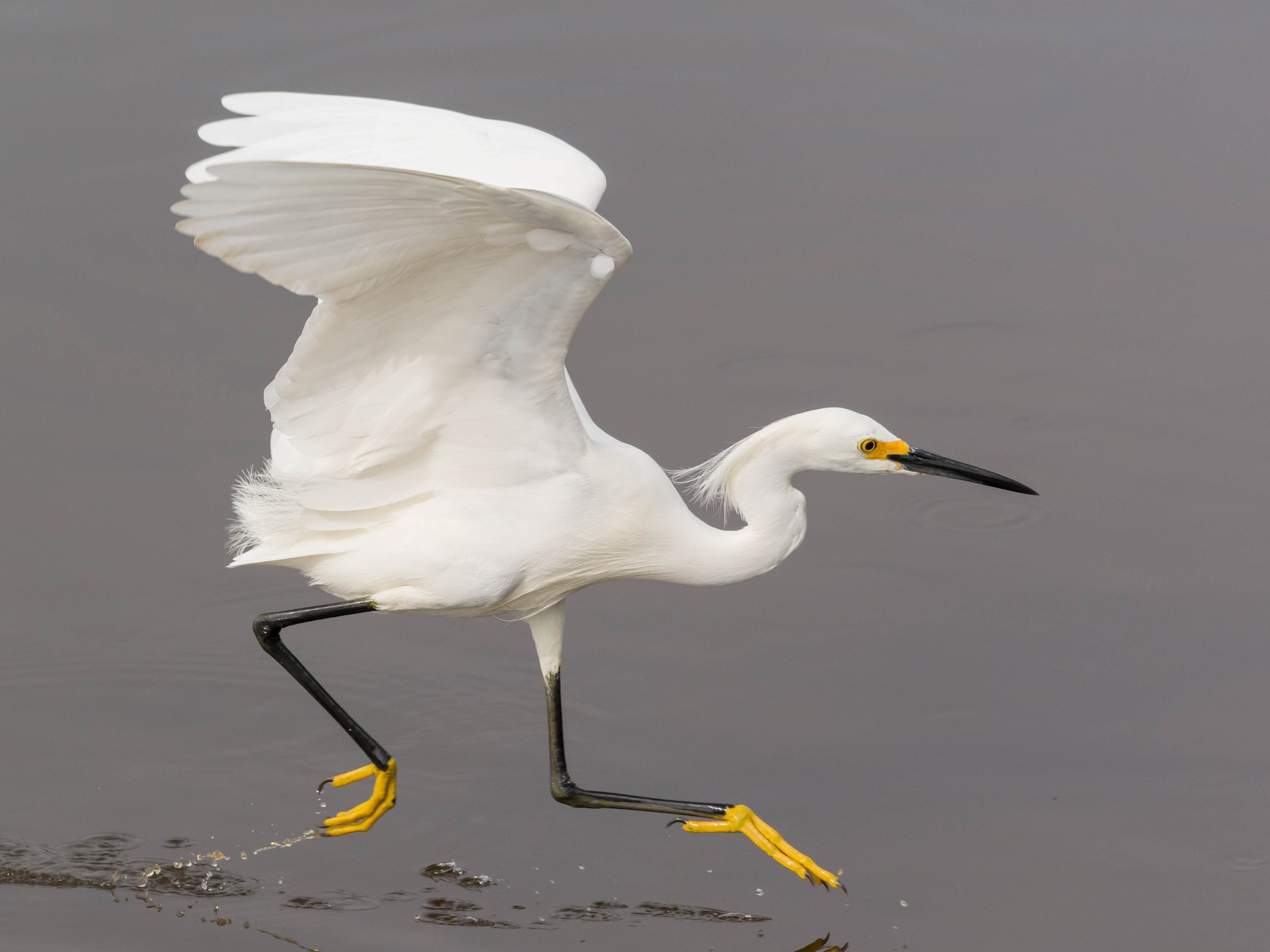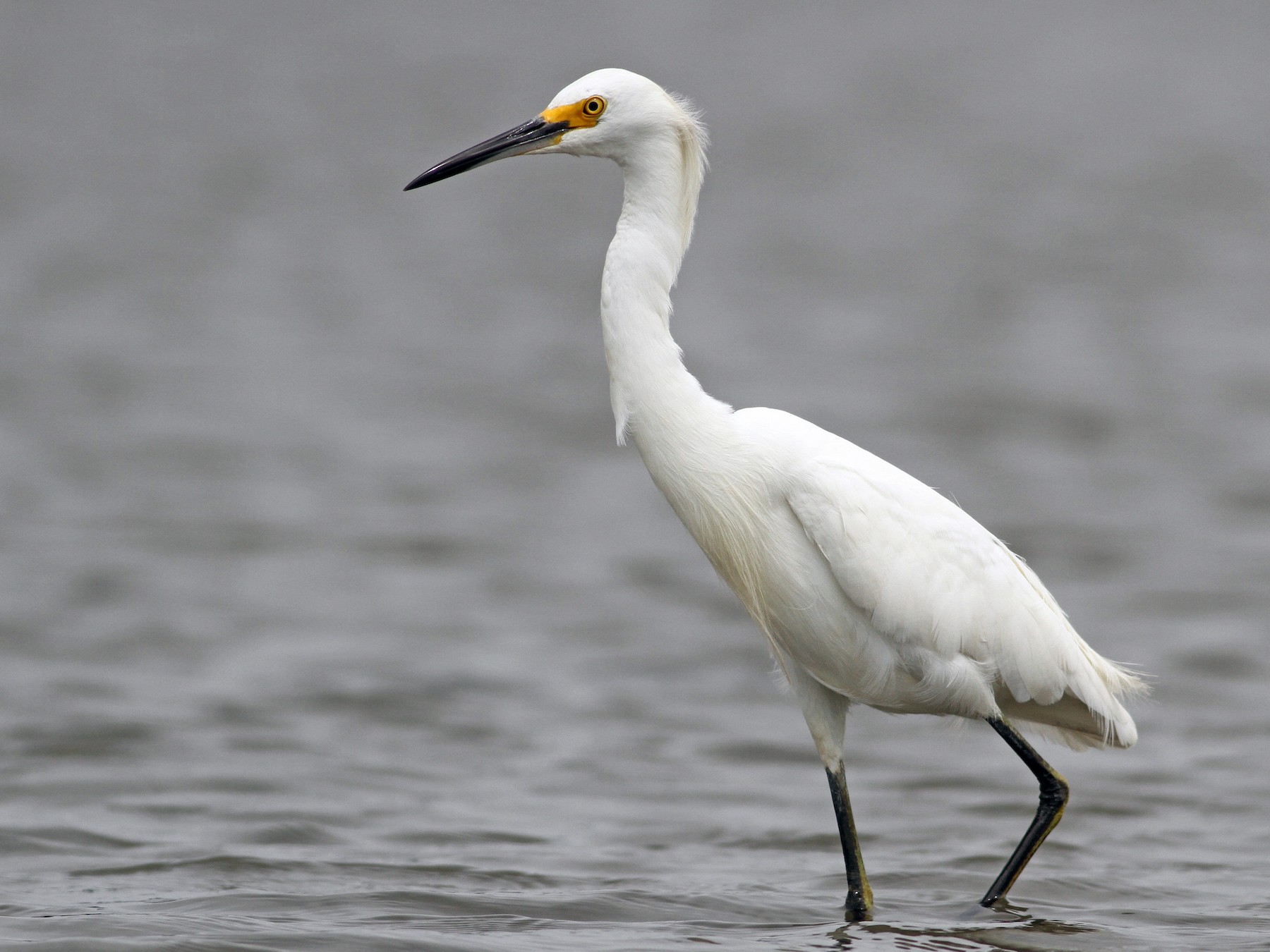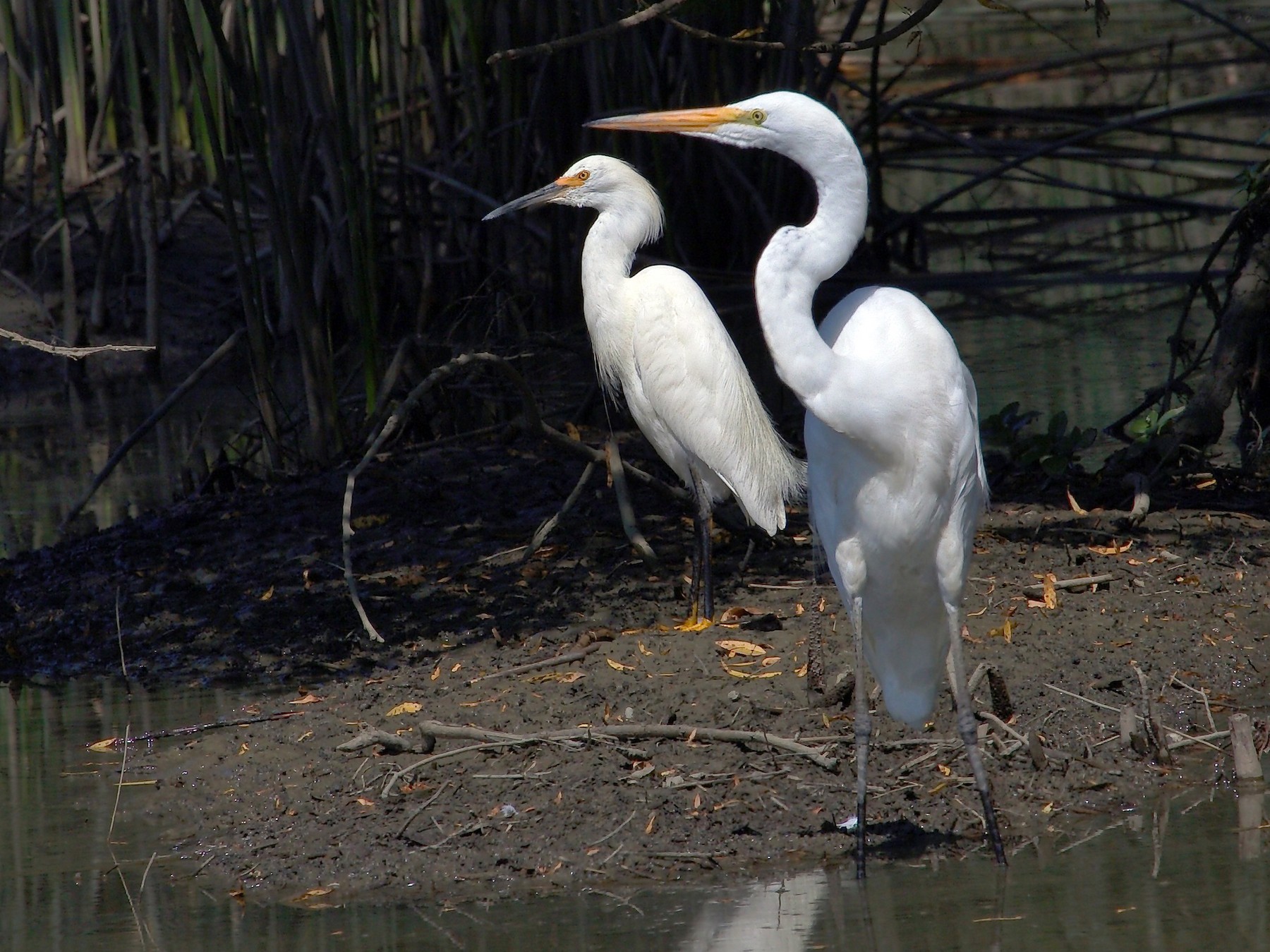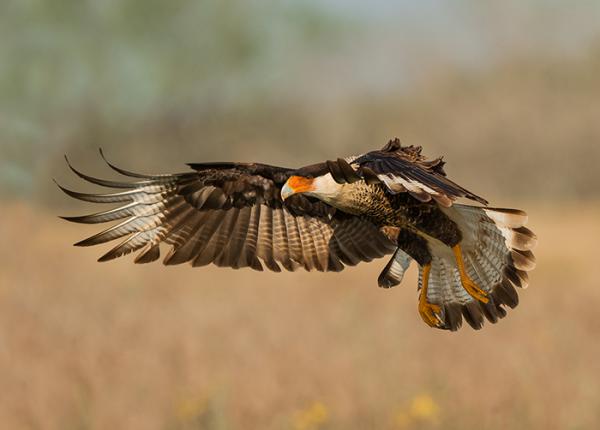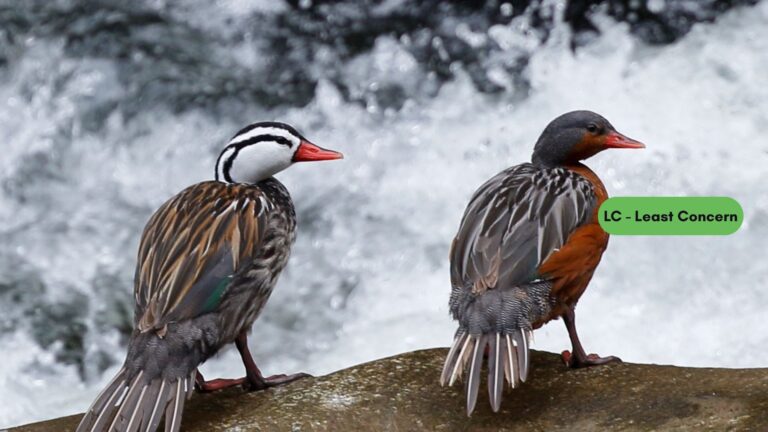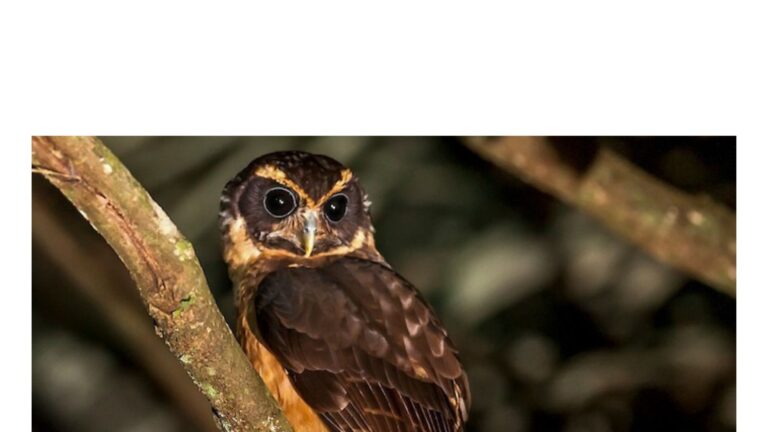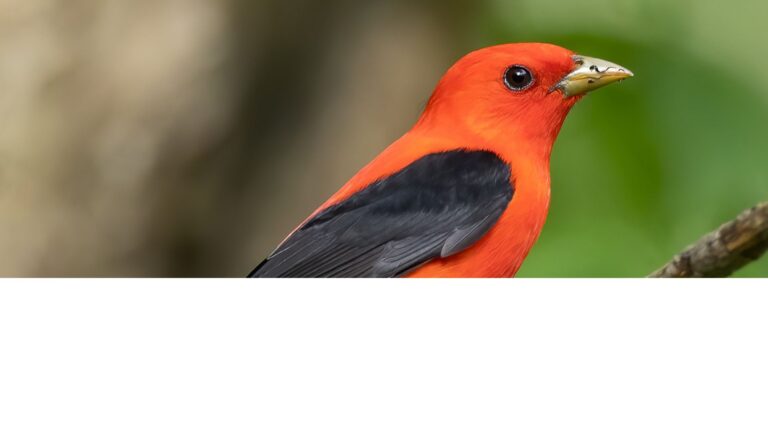Snowy Egret: The Majestic Hunter of Wetlands Revealed
The Snowy Egret, scientifically known as Egretta thula, is a striking bird recognized for its elegant white plumage and distinctive yellow feet. These features not only make it visually appealing but also help it thrive in diverse wetland habitats throughout North America. This species plays a crucial role in the ecosystem, serving as a predator of small fish and invertebrates, which helps maintain a balanced food web.
In addition to its ecological importance, this bird has a fascinating history that reflects its impact on culture and conservation efforts. Once hunted for its beautiful feathers, it now symbolizes the success of wildlife protection measures. Learning about how it adapts to changes in its environment can provide insight into broader conservation challenges faced by many species today.
Understanding the habits and characteristics of this egret reveals much about its role in nature and its journey through conservation. This adaptive bird continues to inspire those who appreciate the beauty of wildlife and the importance of preserving it for future generations.
Key Takeaways
- Snowy Egrets are known for their striking appearance and hunting skills.
- They have successfully adapted to various wetland environments.
- Conservation efforts have significantly helped improve their population status.
Physical Characteristics
This species is known for its striking appearance and unique features that set it apart from other herons and egrets. Understanding its plumage and distinctive features helps illustrate why this bird attracts attention in various habitats.
Plumage and Coloration
This egret boasts pure white plumage that glistens, particularly in sunlight. This striking white coat is a key identifying feature.
During breeding season, they develop long, delicate plumes that extend from their back and head. These feathers add elegance and are often showcased during courtship displays.
The coloration remains consistent throughout the year, making them easily recognizable in their habitats.
Distinctive Features
One of its most notable characteristics is its black bill, which contrasts sharply with its white body. This bill is long and slender, well-suited for foraging in shallow waters.
In addition to the black bill, Snowy Egrets have black legs that provide a stark contrast to their white feathers.
Their yellow feet are another distinctive trait, appearing vibrant against their dark legs. These yellow feet help them stir up mud and silt to uncover prey while wading.
Together, these features contribute to this bird’s unique and elegant appearance in the wild.
Habitat and Distribution
This species is known for its preference for specific habitats that support its feeding and nesting behaviors. Its distribution spans various regions, particularly in the Americas, where it can be found in both coastal and inland environments.
Global Range
This bird primarily inhabits areas across North America, Central America, and parts of South America. They are most commonly seen in coastal regions of the southeastern United States, especially in states like Florida. Their range extends to the Caribbean islands and down through the mainland to countries such as Brazil and Argentina.
These birds also migrate seasonally, often flying to warmer temperatures during colder months. Coastal wetlands and estuaries serve as crucial stopover points during these migrations. In addition to these regions, they can be found in select areas of Europe and Africa, although their populations are less concentrated there.
Preferred Environments
This species thrives in various wetland habitats, including marshes, lakes, ponds, and mangroves. They are particularly fond of shallow waters where they can easily hunt for fish and other small aquatic animals.
Marshes provide excellent nesting sites, as they offer protection from predators. The vegetation around these areas also helps with camouflage. In addition, mangroves play a vital role as feeding grounds and offer shelter during breeding seasons. Snowy Egrets adapt well to different environments, but they depend highly on the health of wetland ecosystems to support their populations efficiently.
Diet and Foraging
This bird has a varied diet that mainly includes aquatic organisms. Its foraging behavior is well-adapted for catching prey in diverse environments, allowing it to be an effective hunter.
Primary Diet
The primary diet consists of fish, insects, frogs, worms, and crustaceans. They typically hunt small fish, which are often their main food source.
In addition to fish, they commonly eat:
- Insects: These include dragonflies and various aquatic insects.
- Frogs: Their diet sometimes includes small frogs, which add variety.
- Worms: Earthworms can be found in muddy areas and are often consumed.
- Crustaceans: They may also eat small crustaceans like shrimp.
This species tends to adapt its diet based on prey availability in its habitat.
Foraging Behavior
Snowy Egrets are known for their unique foraging techniques. They often use their bright yellow feet to stir up the water, which helps to flush out fish and other prey.
Their foraging methods include:
- Stalking: They move slowly and quietly to avoid scaring off potential prey.
- Dashing: Once prey is spotted, they quickly dart to catch it.
- Site Change: They frequently change locations to find more abundant feeding areas.
These behaviors make them successful foragers in various environments from marshes to coastal areas.
Reproduction and Lifecycle
This bird has distinct breeding habits and specific nesting sites that are crucial for its reproductive success. Understanding these aspects is vital to appreciate its lifecycle and ecological role.
Breeding Habits
This species typically breeds during the warmer months, usually between late spring and early summer. Courtship involves elaborate displays, where males perform graceful dances and show off their plumage to attract females.
These egrets are colonial nesters, meaning they often breed in groups, which can enhance protection against predators. The female usually lays 3 to 5 eggs, which are pale blue or greenish. Both parents share incubation duties, which lasts about 23 to 26 days. After hatching, the chicks are altricial, meaning they are born helpless and rely on their parents for food and protection.
Nesting Sites
This bird prefers nesting in wetlands, marshes, and along the edges of lakes or rivers. They often build their nests in trees, shrubs, or reeds to provide safety from ground-based predators.
Nest construction involves using twigs, grasses, and other materials found nearby. These nests are usually platform-like structures that provide a secure area for raising their young. The location is chosen carefully to ensure access to food sources like fish and crustaceans, which are vital for feeding the chicks during their early development.
Conservation Status
The conservation status of this species is an important topic, as it sheds light on their population trends and the human impacts that affect their survival. Understanding these factors can help in making informed conservation decisions.
Population Trends
Population trends have seen fluctuating patterns over the years. In some areas, such as the San Francisco Bay, nesting abundance has increased. This growth, however, comes alongside significant declines in reproductive success, particularly noted among Great Blue Herons and this species due to habitat loss and environmental changes.
Recent studies indicate that Snowy Egrets may be threatened by energetic limitations and declining wetland areas. Such factors directly affect their ability to nest and raise chicks successfully. In regions like Virginia, data suggests that Snowy Egrets serve as a better indicator species than some other bird populations. Tracking their numbers helps in assessing the health of wetland ecosystems.
Human Impact
Human activities play a critical role in the conservation status of this bird. Wetland destruction due to urban development and agriculture has reduced available habitat. This loss impacts their nesting sites and food sources, leading to lower population numbers.
Moreover, pollution from agricultural runoff and industrial waste poses additional threats. These contaminants can affect the health of both adult egrets and their chicks. Conservation efforts aim to restore habitats and improve water quality. Implementing these strategies is vital to enhance population stability and reproductive success for the Snowy Egret in the coming years.
Cultural Significance
This species holds a unique place in various cultural contexts. Its beauty and grace have inspired artistic expressions and folklore, making it a symbol in different traditions.
Artistic Depictions
This bird has been a popular subject in art, especially in paintings and sculptures. Renowned artist Charley Harper captured its elegance through vibrant colors and geometric shapes. His works often include this egret as part of larger wildlife themes, making it stand out.
Canvas wall murals featuring the Snowy Egret add a touch of elegance to home decor. They are popular choices for nature lovers, providing a serene atmosphere. Additionally, ornamental decorations, like figurines or limited edition prints, showcase the bird’s aesthetic appeal. These artistic representations celebrate the Snowy Egret and foster appreciation for its natural beauty.
Symbolism and Folklore
This species is often seen as a symbol of purity and grace across different cultures. In some traditions, its white plumage represents enlightenment and tranquility. This symbolism is evident in various folklore stories where the bird is portrayed as a wise observer of nature.
In Southeast Asian cultures, the Snowy Egret appears in tales that emphasize harmony between humans and nature. These stories highlight the bird’s role in maintaining ecological balance. Through these narratives, the Snowy Egret becomes more than just a bird; it embodies values like protection and respect for the environment.
Frequently Asked Questions
These birds are fascinating with distinct features and behaviors. Understanding these aspects can enhance appreciation for their role in the ecosystem.
What distinguishes the Snowy Egret from the Great Egret?
This bird is smaller than the Great Egret, measuring about 24-30 inches in length. Its striking white plumage is often accented with black legs and yellow feet, setting it apart. In contrast, the Great Egret has a much larger body and longer neck, with an all-yellow beak.
Which habitats are typically occupied by Snowy Egrets?
This egret prefers coastal wetlands, marshes, and shallow lakes. They are often found in areas with abundant vegetation, which provides cover and hunting grounds. These birds can also adapt to human-altered environments, like agricultural fields.
What constitutes the primary diet of the Snowy Egret?
This bird primarily feeds on small fish, crustaceans, and frogs. They are known for their hunting techniques, which include stealthy movements and quick strikes. Their sharp, pointed beaks are perfect for catching slippery prey.
What range does the Snowy Egret cover in its migrations and residence?
Snowy Egrets have a wide range that extends across North America. During the breeding season, they are commonly found in the southern United States. In winter, they migrate south to Central America and the northern parts of South America.
How does the Snowy Egret’s size compare to similar species?
Snowy Egrets are smaller than other herons, typically weighing 16-28 ounces. In contrast, the Great Egret can weigh up to 5.5 pounds. This size difference is evident in their hunting styles and preferred habitats.
Can you share some interesting facts about the Snowy Egret?
Snowy Egrets are known for their elaborate courtship displays, which include dancing and vocalizations. They are also skilled foragers, often seen hunting in groups. Additionally, they can often be spotted following larger animals, like cattle, to catch disturbed insects and small animals.
